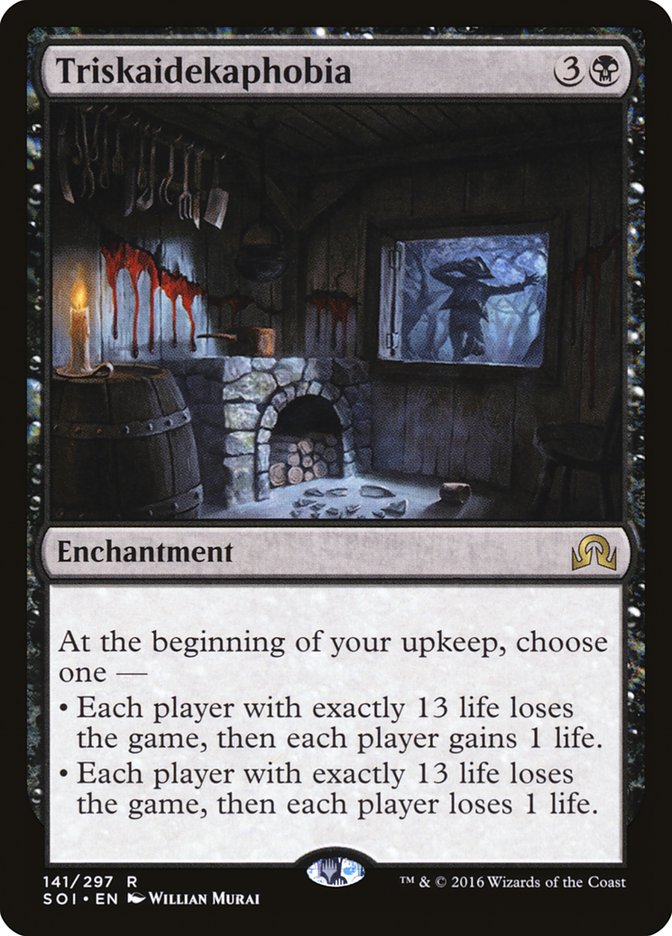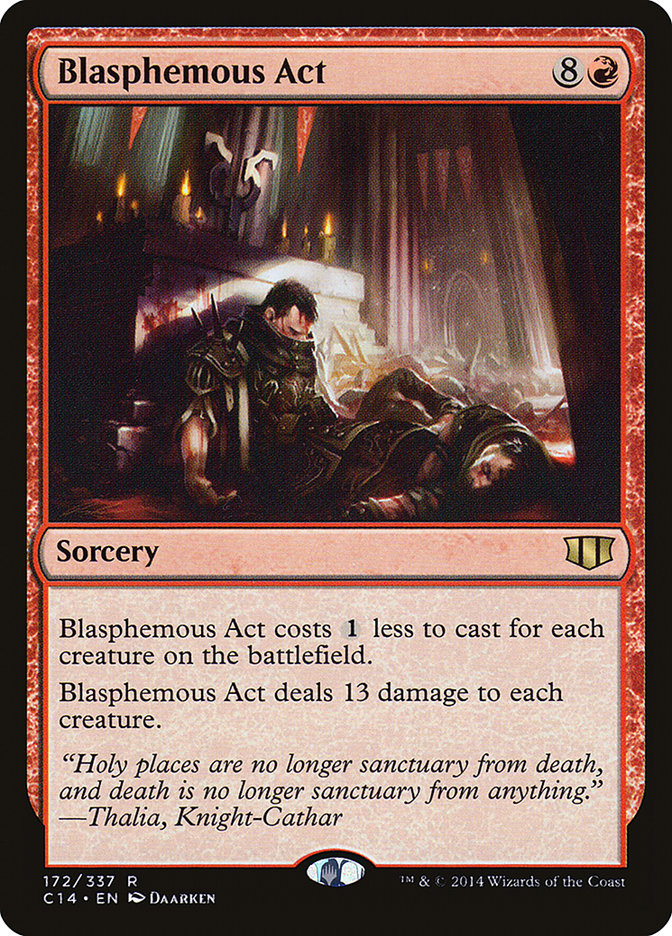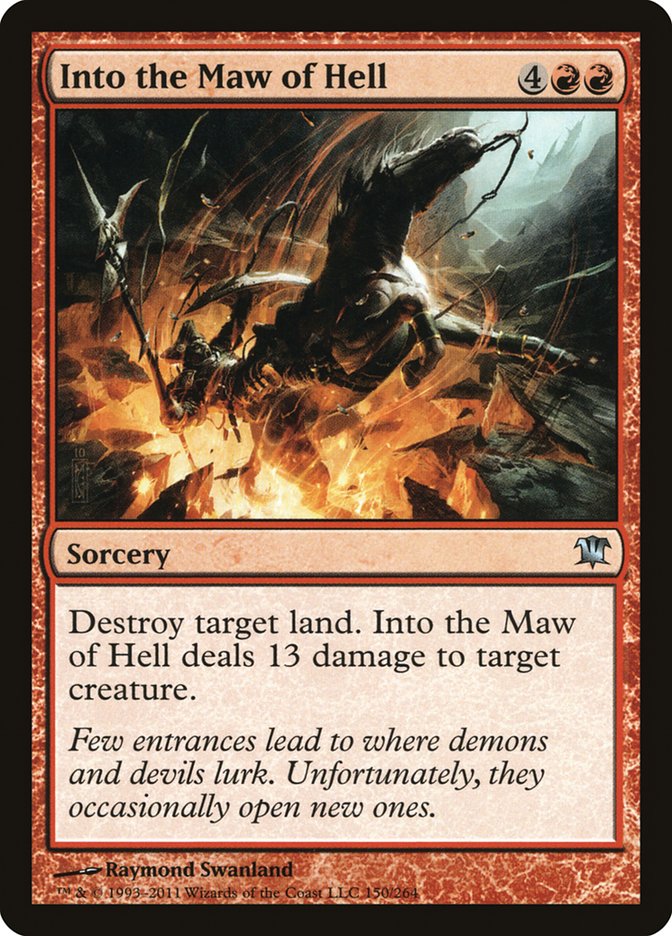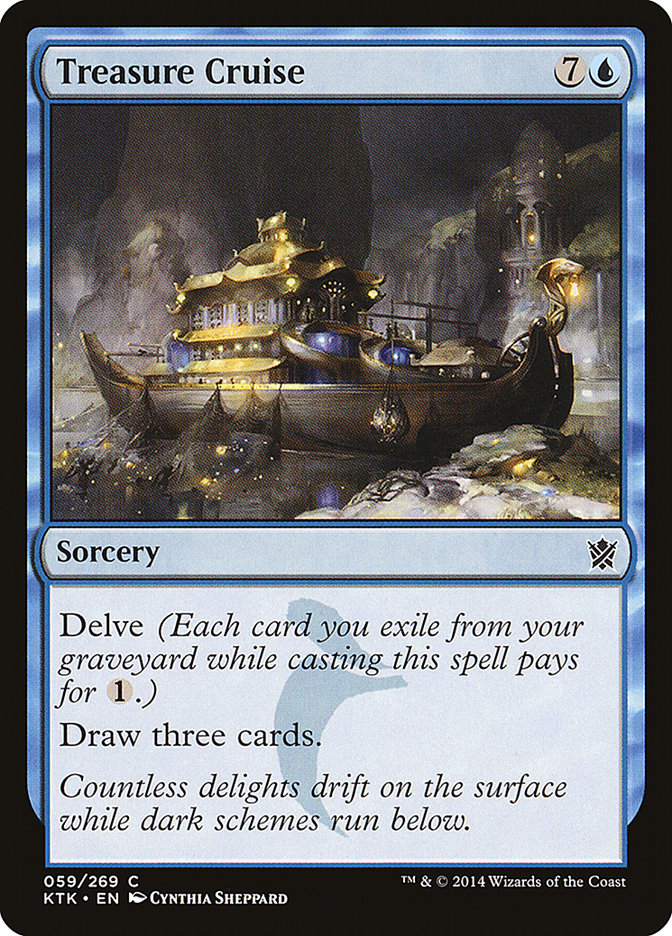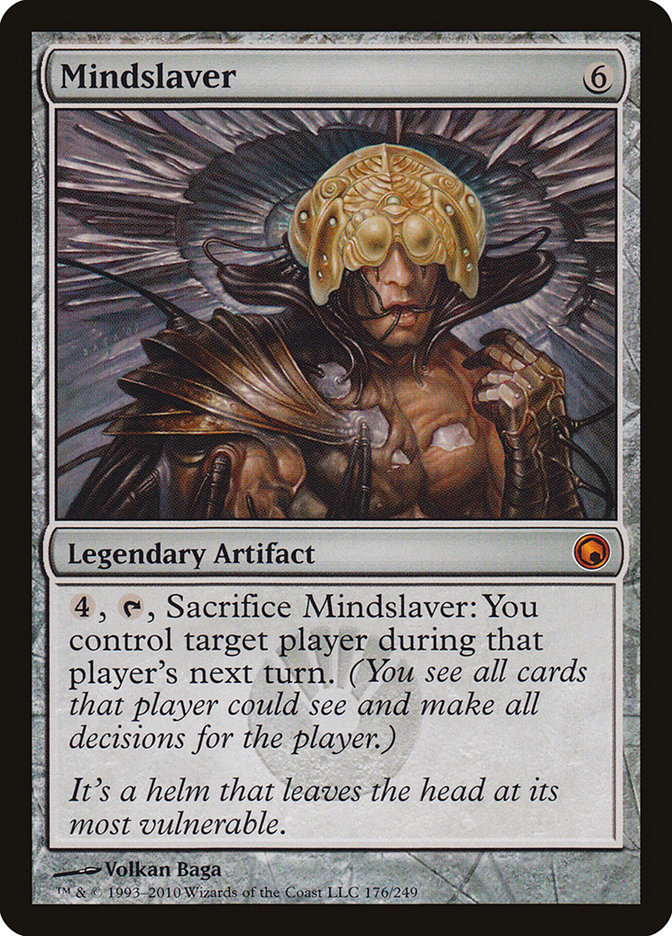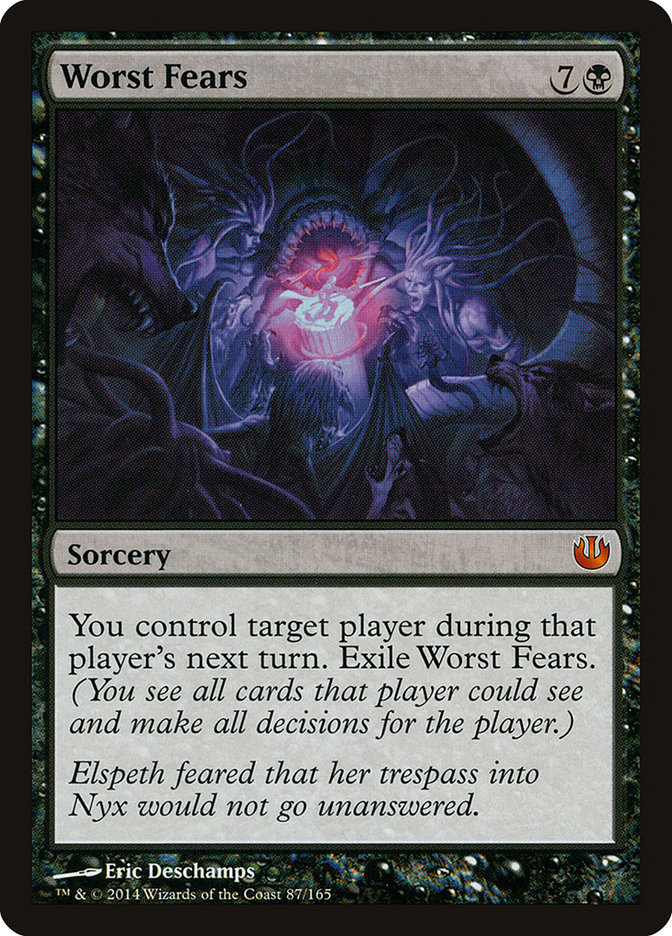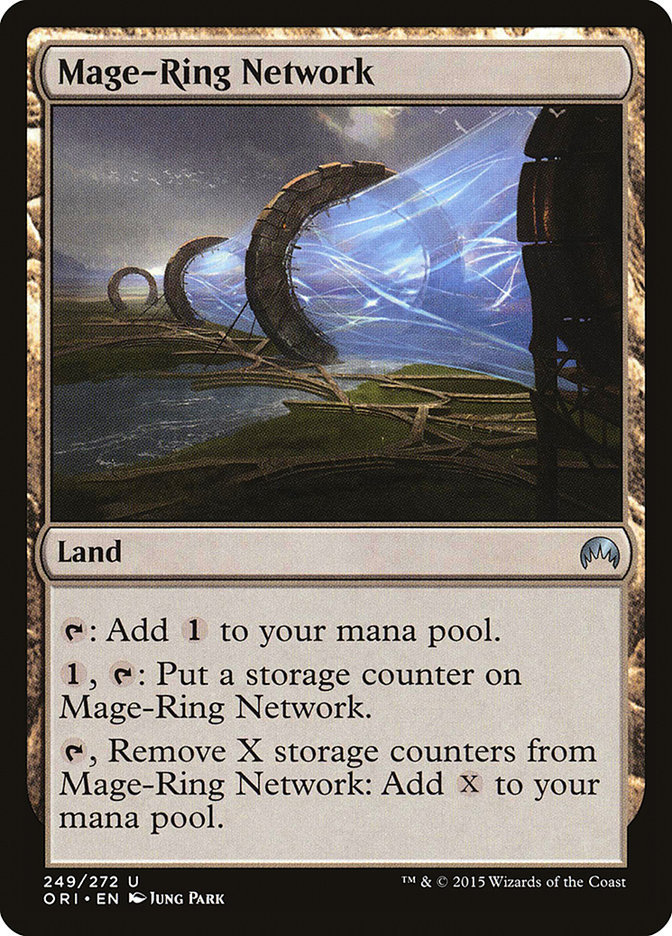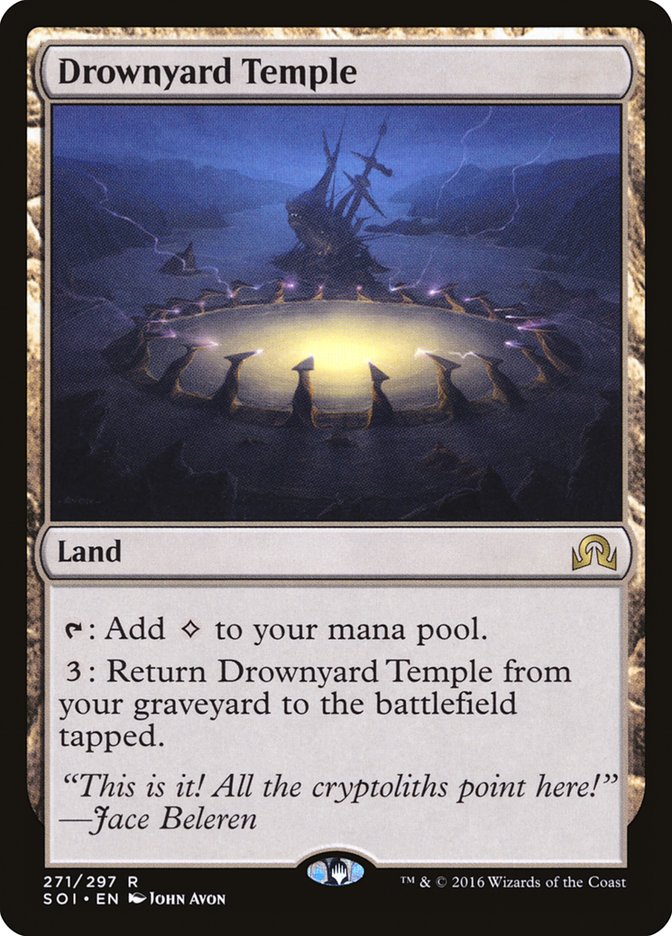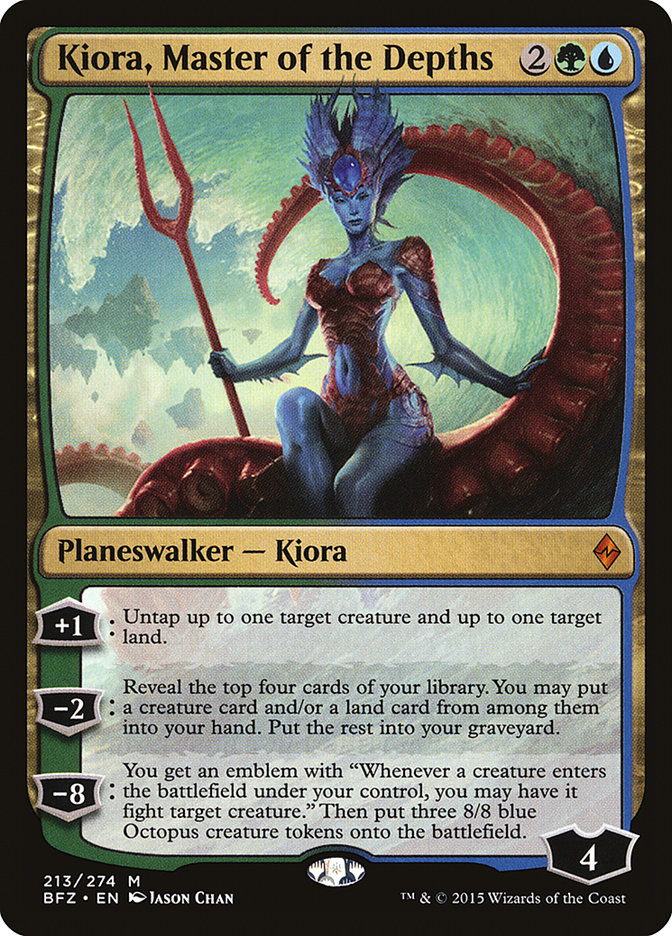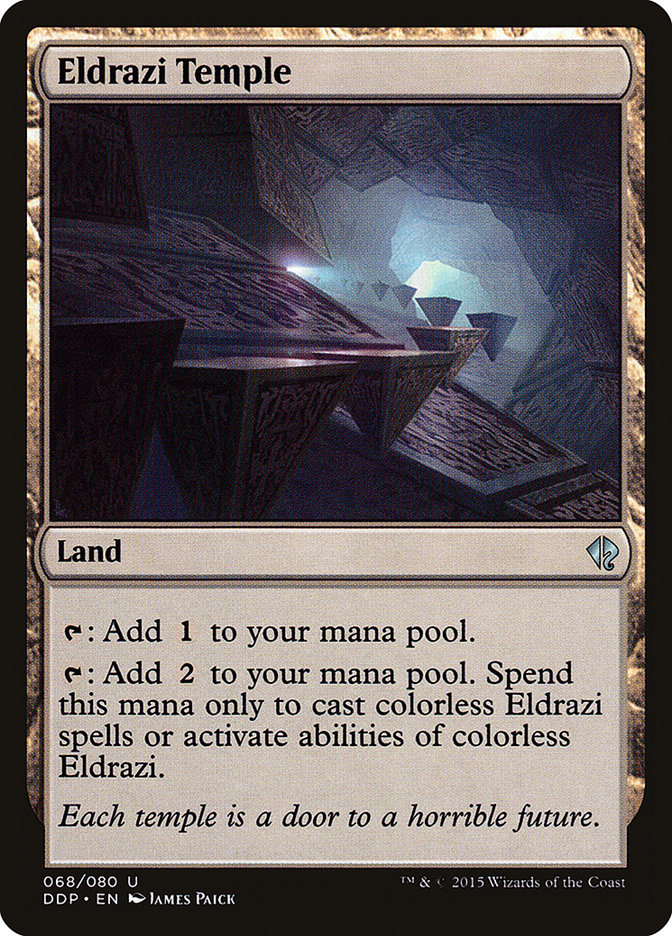They really weren’t squidding around when they made Emrakul, the Promised End.
The speculation is over! Yes, you guessed it; the hidden horror casting the Shadows over Innistrad was Tentacool’s third evolution all along.
Seriously, though, Emrakul, the Promised End looks fantastic and appears to be a worthy successor to Emrakul, the Aeons Torn, although not in quite the same way. The card looks really well-designed and interesting. Cards like Triskaidekaphobia somehow get even cooler. Even the set symbol looks amazing. Wizards of the Coast continues to express lore through the cards very well.
So how good will Emrakul, the Promised End be in Constructed?
Emrakul, the Promised End has a few indicators it may be a very impactful Constructed Magic card.
#1. It’s Eldritch Moon’s flagship card.
Maybe not strong evidence, but possibly a hint. How many bad Jace cards do you see roaming around the Multiverse? One. Jace, the Living Guildpact. If they make the set symbol Emrakul and then the Emarkul card is bad, that would be surprising.
#2. It’s incredibly unique, difficult to evaluate, and has a lot of text, which often means broken.
#3. Its cost can be reduced.
Emrakul, the Promised End costs 1 less to cast for each card type among cards in your graveyard.
Emrakul, the Promised End ‘s incredibly high mana cost is of course the biggest immediate turn-off, which could also mean it will be reserved more for Casual play.
The initial reaction to it has been one of skepticism for this reason, but that could easily change if a powerful enabler is printed, for example, something along the lines of Satyr Wayfinder.
But I’m in the camp that thinks it will be quite good, even without any more help.
Cost reduction. Sometimes, it’s very good.
First of all, how much can we expect to be shaving off of that massive thirteen in the top-right-hand corner?
Unlike Tarmogoyf, which benefits from both graveyards, Emrakul, the Promised End doesn’t count your opponents graveyard in its cost reduction.
The card types are creature, land, planeswalker, instant, sorcery, enchantment, artifact, and last (and most certainly least), tribal.
So that’s a maximum reduction of eight, and more realistically, if you aren’t specifically trying to be cute with tribal, seven, which would make Emrakul, the Promised End cost six.
Casting Emrakul, the Promised End on six mana is obviously insanely good, but very difficult to set up. Casting it at thirteen mana is obviously quite bad. But what about when you’re right in the middle at around nine mana? (Which would mean you just have delirium.)
#4. It has a Mindslaver effect stapled onto it. Mindslaver-style effects should not be taken lightly.
When you cast Emrakul, you gain control of target opponent during that player’s next turn. After that turn, that player takes an extra turn.
It’s hard to say exactly what role and decks Emrakul, the Promised End will fill without actually playing such a strange new card, but a good starting point for comparison might be with Ulamog, the Ceaseless Hunger.
Both are high-impact expensive cards, so the decision between Emrakul, the Promised End and Ulamog, the Ceaseless Hunger might be a common one.
#5. Ulamog, the Ceaseless Hunger also sees plenty of play, so if Emrakul, the Promised End compares favorably, it will see play.
What if Emrakul, the Promised End also just cost ten mana. Which is better?
Ulamog, the Ceaseless Hunger’s big draw is its “exile two permanents on cast” clause, so we can look at that versus Emrakul’s strange Mindslaver effect.
The strange part is that your opponent gets a turn right after you steal one of their turns, which hasn’t been seen before and weakens the effect a fair bit. Normally, taking control of your opponent’s turn implies you’re also getting a Time Warp effect afterwards as well. Instead you’re creating a whole extra turn out of nowhere for your opponent that you get to control. It’s more like a Bizarro Time Warp, where instead of you just taking an extra turn, you take an extra turn as your opponent’s evil twin and try to crash their gameplan into the ground, which is usually incredibly fun and rewards creative plays.
At eight mana, Worst Fears saw a little play during its stay in Standard. In the current Standard format, an effect like Worst Fears might see plenty of play as players are already often going to extreme lengths to go over the top of each other and win the late-game. The actual card Mindslaver is a ten-mana investment, which is the entire cost of Ulamog, the Ceaseless Hunger.
Once you’ve taken an opponent’s turn, Emrakul, the Promised End does nicely lure opposing creatures into its loving tentacle embrace, which is going to be approximately equal to exiling one creature. If you have more creatures on your side of the table, you can potentially attack more of your opponent’s creatures into your waiting blockers. You’re the one calling all the shots, after all. You’re going to always lose your Elf trying to get past Mom’s spaghetti.
Still, Emrakul, the Promised End’s turn stealing can actually be a downside, since you’re letting your opponent draw an extra card. For example, what if they draw two Planar Outbursts in a row? Sometimes there won’t be much you can do to punish your opponent with a stolen turn. If your opponent just has Planar Outburst in hand, there won’t be much you can do to keep your Emrakul alive.
Overall, I think Ulamog, the Ceaseless Hunger’s cast trigger is better and more consistent, but it may be very close.
#6. It has a massive 13/13 body attached to flying and trample, and it can’t be picked off by instant speed removal.
Flying, trample, protection from instants.
What’s more fun than ten tickles? Thirteen tickles, of course!
“Tickling” your opponent for thirteen is a good way to win the game.
Stats-wise, Emrakul, the Promised End is a better brawler and a better blocker than Ulamog, the Ceaseless Hunger, despite not being indestructible, since it has flying, trample, and more power and toughness. There will be times when you can’t get rid of an opponent’s Ruinous Path, or they’ll topdeck an answer, or they’ll have a Planar Outburst, though.
Both cards seem similarly matched. The big draw to Emrakul, the Promised End is going to be when your deck is capable of heavily reducing its mana cost or using as a tutor target for Nahiri, the Harbinger.
#7. Information is incredibly important. Not only do you get to see their hand and their library if you have a way to search, but you get to look at their sideboard once you’re in their turn to see what’s coming in future games, or to infer what might be left in their library.
So what will it look like when we turn Emrakul, the Promised End into a Promised Friend?
Nahiri, the Harbinger and Emrakul, the Aeons Torn had their fun in Modern. Now it’s time for Nahiri, the Harbinger and Emrakul, the Promised End to do some noodling in Standard.
Creatures (2)
Planeswalkers (6)
Lands (26)
Spells (26)

Here’s a simple list that Emrakul, the Promised End might slide right into quite nicely.
Nahiri, the Harbinger gets way better now, since being able to search up Emrakul, the Promised End with her ultimate is going to be quite good. Ulamog, the Ceaseless Hunger was always a lackluster choice for her, since it is easily chump blocked. Dragonlord Atarka is still a good option though if you have access to it.
If the flying, trampling, instant-proof thirteen damage doesn’t kill them, you shouldn’t be far off from replaying Emrakul, the Promised End after it gets returned to your hand.
Nahiri, the Harbinger further synergizes by filling up your graveyard and reducing Emrakul’s cost.
#9. Mage-Ring Network and Drownyard Temple.
These are excellent ways to help speed up The Tickling.
#10. Decks run cards with card types.
Emrakul, the Promised End is not unreasonable as a sideboard, or even maindeck, card in small numbers in all sorts of lists. Normal lists of G/W Tokens, for example, have access to every card type except tribal, even though some are awkward to get in your graveyard. It’s easy to expect Emrakul to show up in small numbers in W/B Control, B/G Control, Four-Color Rite decks, Sultai Control, or lots of decks, really. It won’t fit everywhere but it will fit a lot of places.
Emrakul, the Promised End might be a little underestimated at first glance because people aren’t respecting that not only is it a nice little Mindslaver effect, it comes attached to an incredibly hard-to-kill gigantic Eldrazi. You’ll get a turn with your opponent’s cards to clear the way. Don’t worry about that Declaration in Stone that would normally take care of a big bad creature, as long as there are other creatures on the battlefield, you can waste it for your opponent. Then a 13/13 flying, trample creature will end the game in a hurry and that will often be well worth an eight- or nine-mana investment.
There are some lists that might seem like obvious fits that would take some retooling, though. For example:
Creatures (13)
Lands (26)
Spells (21)

There are no sorceries in this entire list, which would hurt Emrakul, the Promised End a great deal.
#11. Graveyard fillers.
Kiora, Master of the Depths is an exciting card to build around, since it enables your graveyard and would help ramp out Emrakul earlier.
What about a simple ramp deck specifically revolving around trying to cast Emrakul, the Promised End as quickly as possible?
Creatures (13)
- 2 Ulamog, the Ceaseless Hunger
- 1 Jaddi Offshoot
- 2 World Breaker
- 4 Hedron Crawler
- 4 Emrakul, the Promised End
Lands (22)
Spells (25)

This might be a little messy but it certainly shows promise and how the dynamic of deckbuilding might change. You’ll be trying to maximize the effectiveness of Emrakul, the Promised End by running cards that enable it, like Vessel of Nascency, without weakening your deck too much.
My first instinct is that Emrakul, the Promised End seems a little too slow for most decks in Modern and is not going to be worth it to focus on making it cost less.
I’ve advocated cutting Emrakul, the Aeons Torn from Jeskai Control decks, so what about simply swapping Emrakul, the Aeons Torn with Emrakul, the Promised End? You still get a somewhat powerful finisher with the ability to hardcast it for eight or nine mana as well.
It still doesn’t quite seem worth it, since it won’t be amazing to search for using Nahiri’s ultimate and it won’t be amazing to hardcast either. It functions similarly to something like Inferno Titan and is just going to be harder to cast.
Other decks like Mono-Blue Tron or G/R Tron might seem like reasonable fits; after all, Ulamog, the Ceaseless Hunger is great in G/R Tron and Mono-Blue Tron runs the card Mindslaver. Unfortunately, the problem is they have very few ways to reduce Emrakul, the Promised End’s casting cost, so they would need to be retooled or Emrakul would need to be very worth it.
#12. Eldrazi Temple.
Eldrazi Aggro with something like Satyr Wayfinder, Eldrazi Temple, and Traverse the Ulvenwald is also an option, but it would take a lot of effort to get the engine working, and you’d need to make a compelling case as to why you weren’t just playing Bant Eldrazi.
But that doesn’t mean it won’t show up anywhere. Time will tell if there’s a good home for Emrakul, the Promised End in Modern, and it over-performing in Standard would be a strong indication toward that.If there is a way to break Emrakul, the Promised End in Modern, it will almost certainly involve Eldrazi Temple.
#13. There are still plenty more Eldritch Moon cards to come, and the right support could make Emrakul busted.
So there you have it, my first look at the first Eldritch Moon spoiler. It’s still incredibly early to say for sure, but I think Emrakul, the Promised End will hit Standard hard and I’m giving it two tentacles way up.
What do you think? What’s the best way to abuse Emrakul, the Promised End? Are there existing strategies where it fits? Or will it be a big jelly-flop?



